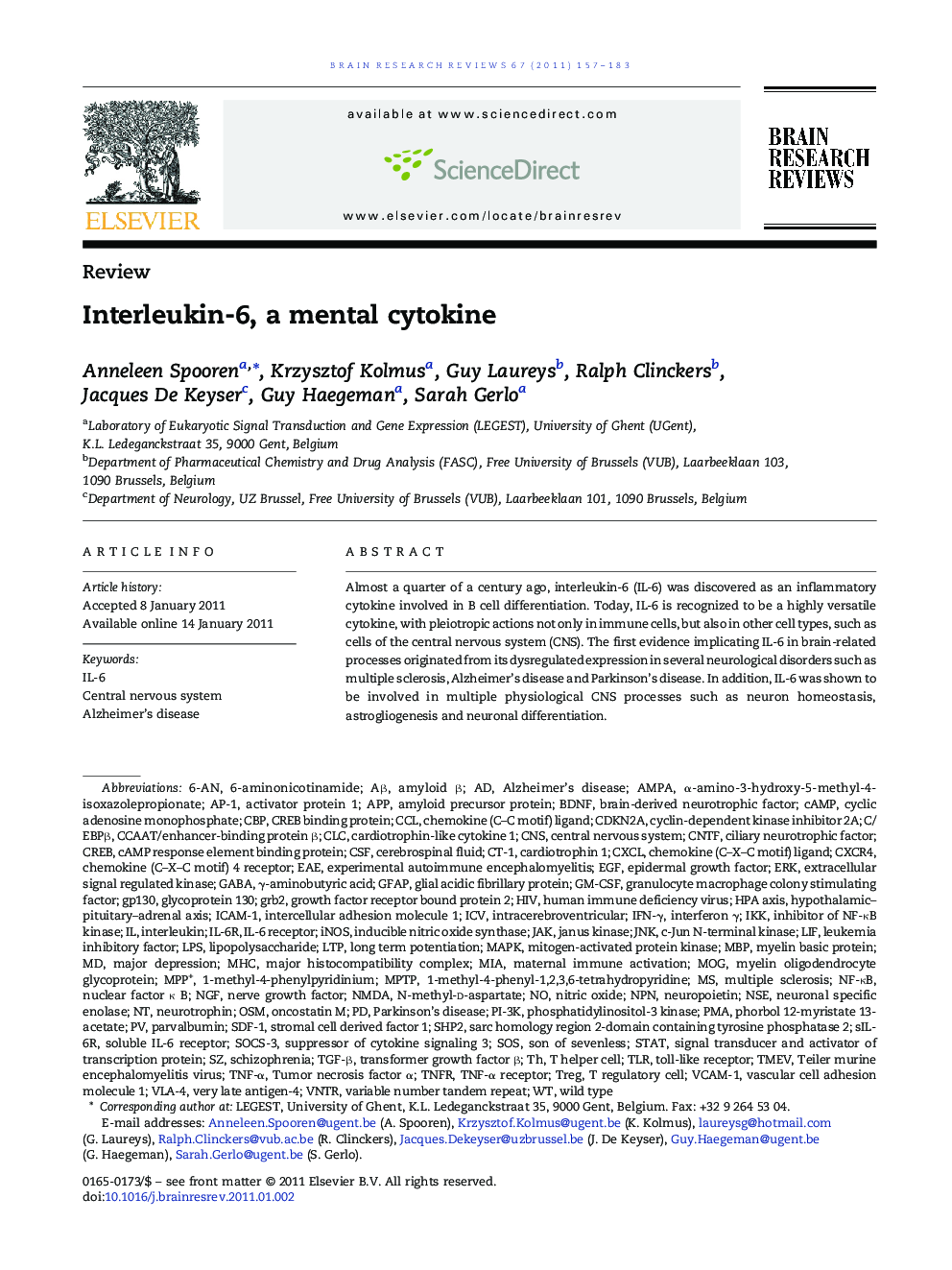| Article ID | Journal | Published Year | Pages | File Type |
|---|---|---|---|---|
| 6265958 | Brain Research Reviews | 2011 | 27 Pages |
Almost a quarter of a century ago, interleukin-6 (IL-6) was discovered as an inflammatory cytokine involved in B cell differentiation. Today, IL-6 is recognized to be a highly versatile cytokine, with pleiotropic actions not only in immune cells, but also in other cell types, such as cells of the central nervous system (CNS). The first evidence implicating IL-6 in brain-related processes originated from its dysregulated expression in several neurological disorders such as multiple sclerosis, Alzheimer's disease and Parkinson's disease. In addition, IL-6 was shown to be involved in multiple physiological CNS processes such as neuron homeostasis, astrogliogenesis and neuronal differentiation.The molecular mechanisms underlying IL-6 functions in the brain have only recently started to emerge. In this review, an overview of the latest discoveries concerning the actions of IL-6 in the nervous system is provided. The central position of IL-6 in the neuroinflammatory reaction pattern, and more specifically, the role of IL-6 in specific neurodegenerative processes, which accompany Alzheimer's disease, multiple sclerosis and excitotoxicity, are discussed. It is evident that IL-6 has a dichotomic action in the CNS, displaying neurotrophic properties on the one hand, and detrimental actions on the other. This is in agreement with its central role in neuroinflammation, which evolved as a beneficial process, aimed at maintaining tissue homeostasis, but which can become malignant when exaggerated. In this perspective, it is not surprising that 'well-meant' actions of IL-6 are often causing harm instead of leading to recovery.
